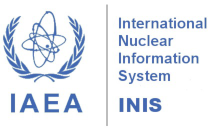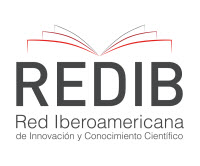Manufacturing of Physical Phantom and Evaluation of a Software for Automated and Remote Quality Control in Mammography Using a Retrofit DR System
DOI:
https://doi.org/10.15392/2319-0612.2024.2528Keywords:
Mammography, Quality Control, AutomationAbstract
Mammography is crucial for the early detection of breast cancer, requiring periodic quality controls to ensure that images and patient exposure doses comply with regulatory limits. This study addresses the challenges involved in conducting quality control, such as the lack of qualified personnel and the subjectivity of daily evaluations with phantoms. Additionally, the research proposes the incorporation of automated and remote quality control tools. In this context, a simple phantom was developed by the IAEA using materials such as copper, acrylic, and aluminum, to be used with the Automated Tool for Image Analysis (ATIA) software. This software performs automatic image analyses, extracting data from the DICOM header and exporting it to a CSV file for analysis in Excel® spreadsheets. The objectives of this work were: (a) to manufacture the phantom according to the standard model from the IAEA Human Health Series No. 39 publication; (b) to apply the ATIA software in the daily monitoring of a mammography unit and the digital radiography (DR) image receptor retrofitted to an analog mammography unit at the Laboratory of Radioprotection Applied to Mammography (LARAM) of CDTN; (c) to evaluate and compare the responses obtained between the automated ATIA software and the manual IMAGEJ software. The results demonstrated the stability and consistency of the mammography system in metrics such as SDNR and SNR, essential for ensuring image quality. However, variabilities in horizontal and vertical MTF at lower spatial frequencies indicate discrepancies in resolving fine details. The detectability index (D') stood out for its high consistency, indicating the reliability of the mammography system in detecting small details. Thus, it can be inferred that significant differences between quality control software in various metrics highlight the importance of careful software selection to meet specific mammographic evaluation needs.
Downloads
References
[1] MORA, P. ; PFEIFFER, D. ; ZHANG, G. et al. The IAEA remote and automated quality control methodology for radiography and mammography. Journal of Applied Clinical Medical Physics, Louisville, vol 22, p. 1–17, 2021. DOI: https://doi.org/10.1002/acm2.13431
[2] BRAZIL. Ministério da Saúde. Diretoria Colegiada da Agência Nacional de Vigilância Sanitária. Instrução Normativa IN Nº 92, de 27 de maio de 2021. Brasília, DF: Diário Oficial da União, 2021.
[3] BRAZIL. Ministério da Saúde. Diretoria Colegiada da Agência Nacional de Vigilância Sanitária. RDC Nº 611, de 9 de março de 2022. Brasília, DF: Diário Oficial da União, 2022.
[4] EFOMP - European Federation of Organizations for Medical Physics. EFOMP Mammo Protocol. Quality controls in Digital Mammography. 2017.
[5] IAEA - International Atomic Energy Agency. Implementation of a Remote and Automated Quality Control Programme for Radiography and Mammography Equipment. Vienna: Human Health Series nº39. Disponível em: https://www.iaea.org/publications/13539/implementation-of-a-remote-and-automated-quality-control-programme-for-radiography-and-mammography-equipment. Acesso em: 17 jun. 2024.
[6] IAEA - International Atomic Energy Agency. Remote/Automated quality control in Radiology. Vienna: Human Health Series nº39. Disponível em: https://humanhealth.iaea.org/HHW/MedicalPhysics/DiagnosticRadiology/PerformanceTesting/AutomatedQAinRadiology/index.html. Acesso em: 17 jun. 2024.
[7] DRTECH Co, Ltd. “RSM1824C / RSM2430C User Manual”. Disponível em: https://www.drtech.co.kr/kr/. Acesso em: 01 jun. 2024.
[8] DONINI, B. et al. Free software for performing physical analysis of systems for digital radiography and mammography. Medical physics, Bolonha, v. 41, n. 5, p. 051903, 2014. DOI: https://doi.org/10.1118/1.4870955
[9] FOGAGNOLI, M. P. et al. Implementação de um Programa de Controle de Qualidade Remoto para Avaliação de Imagens em Radiografia Convencional e Mamografia. Revista Brasileira de Física Médica, São Paulo, v. 16, p. 696-696, 2022. DOI: https://doi.org/10.29384/rbfm.2022.v16.19849001696
[10] MINITAB. Minitab Statistical Software, versão 18 [software]. State College, PA: Minitab, Inc., 2017.
Downloads
Published
Issue
Section
Categories
License
Copyright (c) 2024 Laila Fernanda Moreira de Almeida, Camila Engler, Peterson Lima Squair, Maria do Socorro Nogueira

This work is licensed under a Creative Commons Attribution 4.0 International License.
Licensing: The BJRS articles are licensed under a Creative Commons Attribution 4.0 International License, which permits use, sharing, adaptation, distribution and reproduction in any medium or format, as long as you give appropriate credit to the original author(s) and the source, provide a link to the Creative Commons license, and indicate if changes were made. The images or other third party material in this article are included in the article’s Creative Commons license, unless indicated otherwise in a credit line to the material. If material is not included in the article’s Creative Commons license and your intended use is not permitted by statutory regulation or exceeds the permitted use, you will need to obtain permission directly from the copyright holder. To view a copy of this license, visit http://creativecommons.org/licenses/by/4.0/






















